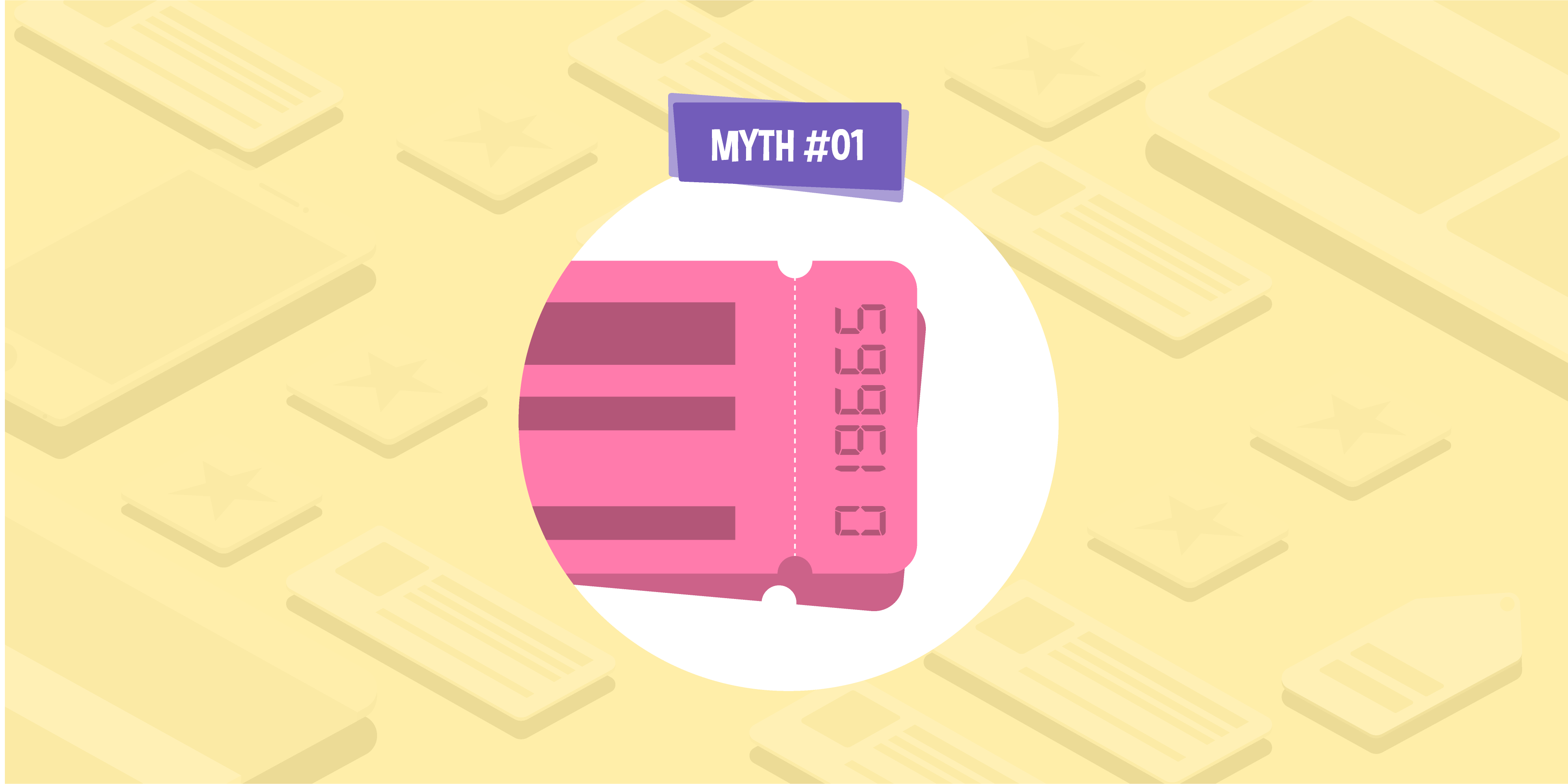
- 03 Mar 2021
- 17 Min read
Webinar: Link-building tips in an uncertain 2021
Transcript
Hi everyone! My name is Jen Macdonald; I am Digital Marketing Manager at Glass Digital.
I have worked in the industry for around five years and seen it constantly changing during this time.
The main part of my role at Glass Digital is to build authoritative backlinks to my clients’ websites, which ultimately contributes to their SEO.
So, today, I will be discussing link-building in an uncertain 2021 with tips around how you can improve your link-building strategy over the coming months.
We will be doing more of these webinars in future to try and help businesses solve some of their digital marketing challenges, so please keep an eye out for them.
What we overcame in 2020
Ok so, as for most businesses in 2020, it was a very challenging year in the link-building industry. Not only did many of our clients have to rethink their contingency plans in terms of budget and strategy, but many publications and journalists were forced to alter their content.
As a result, link-builders had to shift their focus and adapt to these daily changes.
Challenges we faced
Some of the main challenges we faced were centred around client demand. Companies quickly wanted to see an improvement in their online visibility as well as push products or services that may not have been a priority to them before Covid-19.
For example, one of our manufacturing clients decided to focus solely on making PPE for NHS workers during the first lockdown. This meant that we had to rethink any work planned in for the client and make this a priority.
Over the past year, we’ve been challenged with creating positive news in uncertain times. For the first couple of months during the pandemic, all journalists wanted to receive was stories around coronavirus as this was relevant and topical and all anyone was talking about.
This focus quickly changed as people started feeling overwhelmed by the news. After this, publications began to spread positivity with their news stories. For example, how communities were coming together or how to practise mindfulness.
As this need for refreshing news content was continuously changing, link-builders had to be more reactive with their responses to journalists, providing new data and information to journalists on a daily basis.
As a link-builder, one of the most important things to know is that not all campaigns or tactics work. This has always been the case; however, for industries such as travel and wedding, it’s been more apparent than ever over the past year. Rather than being disheartened by this, we had to shift our focus and maybe start again in some cases.
Another huge challenge that we faced was a lack of responses from journalists and editors. Many publications and companies had furloughed staff, so it was important to be patient and keep an eye on any stories being published. We weren’t always informed of any campaigns going live, but even less so when journalists had a heavier workload.
Exposure we secured
While 2020 was a turbulent time, we still managed to gain exposure on many high-authority websites with links included. As you can see here, some of these include Hello! Magazine, Farmers Guardian, Liz Earle, Bustle, and Yahoo! Finance.
Many of these links were built as a result of reactive efforts, newsjacking, and topical campaigns during these uncertain times.
What we learned
As a result of the challenges we faced over the past year, we need to understand how link-building is changing and how we can stay on top of these changes.
Exploring different trends
So, as link-building tactics are continuously changing, it’s important to stay on top of the trends journalists are looking out for.
Last year, TikTok became a huge trend, which is being explored even now for techniques such as roundups and listicles. This is a technique which can be used to show proposal trends, skincare trends, baking trends — this was a massive one for journalists and still is.
Google Trends is a free resource provided by Google, which allows businesses to look at what is trending in their industry. This tool reveals the number of searches related to a topic and peaked interest in a particular search. For instance, last month there was peaked interest for Bridgerton on Netflix and Google Trends showed us this data. Unique Google trends is something journalists love to receive as it gives them key information with evidence to back this up. Not only providing evidence of what you are trying to say, but showing that it is a relevant, trending topic for everyone.
So, for example, when it was revealed that Dominic Cummings had visited Barnard Castle during restrictions, we saw on Google Trends that there were a breakout number of searches for Barnard Castle, so we outreached this in a newsjacking piece, which went down really well.
Similarly to Google Trends, there are several other free online resources which can help you gather search data. As many businesses and industries have moved online over the past year, gathering search data for link-building has never been more important. Again, to provide evidence to back up your story and guide your link-building strategy by finding these trending topics, so often we use them for inspiration.
Two of the resources we use at Glass Digital quite a lot are SEOmonitor and Statista; both are free tools and really simple to use. I think for Statista you might have to sign up after a certain time, but if you are just doing a few searches at the start that is a free tool.
Finally, a trend that I thought was worth mentioning that we found worth exploring was entertainment quizzes. As everyone is spending more time at home and scrolling aimlessly through their phones, we found that creating quizzes (in particular for us, emoji quizzes) has led to links. Publications are looking to provide content for their readers that is engaging and can be shared across social media. This trend may well fade away soon as the lockdown restrictions are eased, however it’s worth exploring if you have the resources available now.
Digital PR campaigns
So, digital PR campaigns have fast become one of the main tactics link-builders use to secure high-quality backlinks. These campaigns can be using design assets, data, research, expert commentary, and so on.
Anything unique and newsworthy that you can turn into a fully fledged campaign is worth looking into — create a story that is unique to your business, which will make people want to share it across their social media and talk about it with their friends. This is mainly what journalists are looking out for.
Whether this is a survey result, research or a visual asset your company has designed, use this to you advantage and this is what journalists are looking out for to give their readers something new. Full campaigns to help them put together an exclusive story bespoke for their readers. If you can give them something that gathers everything, whether that’s research, graphics, commentary — that’s really vital for a journalist.
Some of the campaigns that we have created in the past year include lockdown wedding trends, UK robot density levels, and tool theft prevention techniques, which is included in some of the exposure you can see there, on the Express, Charged, Yahoo! — so some great exposure from those campaigns.
Link-building tips for 2021
I’m just going to go through a few ways that can hopefully help you in your link-building efforts in the coming year. Taking inspiration from what we’ve learnt over the past year, I’m going to run through a few tips which will hopefully help you build more links in 2021.
Empathise
Firstly, I think this is an important one, you need to empathise with the person you are contacting. Whether this is a publication, a freelance journalist, or a complementary business, a key part of link-building is relationships.
This has always been the case, however, in the past year, relationships were built by connecting with people online, following someone on Twitter, or reaching out via email. Now, a relationship you build needs to be more meaningful. You need to show journalists that you recognise their struggles in the industry and care about how their readers are feeling. The stories you tell need to mean more and give people something extra.
Utilise existing contacts
Another tip is most businesses will have several contacts they can turn to at any time, this is the time to call on those businesses or publications who you’ve worked with in the past to ask what their readers or customers would like to see. What is standing out in their industry? What is getting a lot of engagement on their websites or on their social media channels? Who better to ask than the professionals you’ve already worked with and you trust.
Be reactive
Being reactive is without a doubt one of the biggest challenges link-builders have had to face over the past year. While this has always been important in the industry, we are now having to stay ahead of the news like never before. If something has been revealed in the news on Monday, by Tuesday it really is yesterday’s news and there is a different story taking place.
Some of the main ways to build links with reactive content is providing expert commentary to journalists, being quick with turnaround times and staying ahead of the latest news and trends. Don’t be too transfixed on an idea which may have been great for yesterday but could get overshadowed in today’s news.
Be resilient
Following on from that, being resilient while creating a story or asset for link-building is crucial for the success of your campaign. Does your campaign have adaptability? If you’ve carried out research or conducted a survey, make sure you dissect each area of this so you can create a range of different assets.
Whatever link-building tactic you are using, don’t be afraid to change this once your idea has been finalised. It may be that a digital PR campaign is taking a while to create and you need to outreach an expert comment straight away as something has broken in the news that is relevant — that’s fine! Change that tactic if you need to.
Also, make sure your campaigns that you create have multiple angles, so if something changes in the news it may mean that you have to change your story. If so, you need to be prepared for this in advance: that way, it should be easier to flip a campaign quickly and send that across to the journalist as and when the news is breaking.
Be emotionally resilient
As well as being resilient with your work, you need to be emotionally resilient when it comes to link-building. Don’t be too disheartened if an idea doesn’t work; it could be down to bad timing or the wrong angle. Saying this, not all stories go viral that companies create, so try not to compare yourself to others as I can guarantee that they will have had a lot of link-building failed attempts during the past year and before that — they are just not as well publicised.
Don’t take it personally if a journalist doesn’t respond. Try not to worry if you don’t get many responses from journalists. I read a stat the other day saying that some journalists receive over 300 emails in their inbox every day, with new news stories or digital PR campaigns. They might have missed your story or they might have published the campaign without letting you know, so it’s important to keep an eye on your company mentions.
Always try to manage business expectations from the start. Communication is key when trying to understand goals and what you need to achieve to do them. To avoid frustration down the line, communicate well with your team around what is expected from a campaign.
Be prepared
Another tip, always be prepared to answer questions or send further information when outreaching. If possible, and where relevant, create visual assets to go alongside your story or campaign which makes it unique to your business and to stand out from the crowd.
Most stories we read now have visual assets as attention spans are shorter and engagement rates are one of the key metrics publications use to analyse their success stories.
Also, it’s important when link-building to send a publication everything they will need to cover your story without having to ask. This is a major one that I think turns a lot of journalists off publishing your story. Send over headlines, imagery, data, research, expert commentary — anything that they will need to cover your story. This can be sent in a Dropbox folder if it’s too much for an email and it just makes it look a bit tidier.
Ideally, they will be able to publish your content without having to get back to you for anything.
Leave work at work
Finally, my last tip would be to leave work at work. This is probably one of the most important tips I can give you as a link-builder. Try to switch off from the news cycle as best you can; this can be hard as we are always trying to stay ahead of the news and told to keep on top of what’s trending, however it’s important to make sure your free time is spent occupying your mind with other things, especially when the news isn’t very positive (which it has been for the past year).
Another one is also try to avoid burnout. Don’t over-analyse why an idea or a campaign hasn’t worked. Go in, dissect it, but don’t always punish yourself for the negative aspects of it. Try to think of the positive aspects so you can carry those forward and improve your next campaigns with these goals.
Also, your mind and wellbeing matter for link-building. If you are invested and engaged with an idea you are working on, it will show in your link-building efforts. It’s important for the success of your work to stay proactive and optimistic.
This is more challenging than ever at the moment as most days seem to blur into one but just remember there are better times ahead and any link-building you do during this time is well deserved.
Thank you for listening
Hopefully, I’ve given you some useful tips which you can take forward through your link-building efforts in 2021. My details are on the screen there if anyone would like to reach out to me with any questions.
Like I said, we will be doing more of these webinars in the near future, looking at different aspects of digital marketing and how you can get noticed online, so please keep an eye out for them and thank you for watching.
Further information
You can also take a look at the slides on SlideShare. For more outreach tips, read our link-building and PR blog posts.
Want to work with a link-building agency that’s constantly adapting to business needs and market trends? Get in touch for a free outreach consultation.

